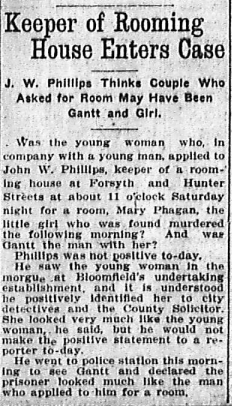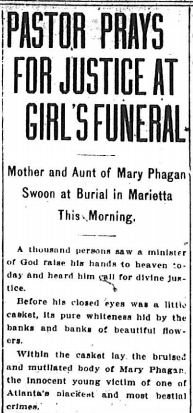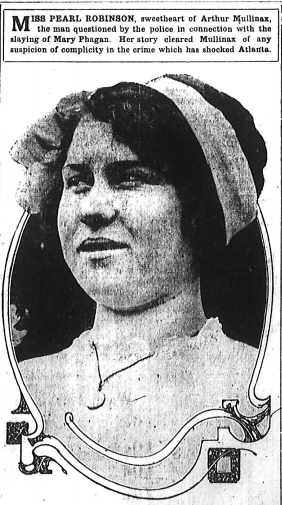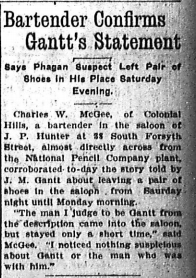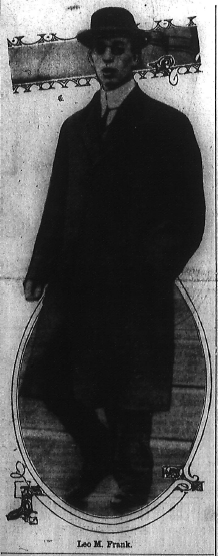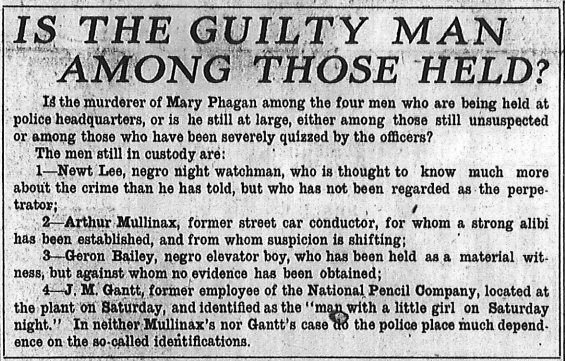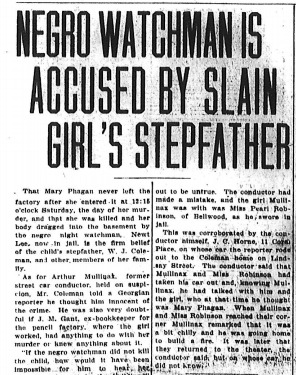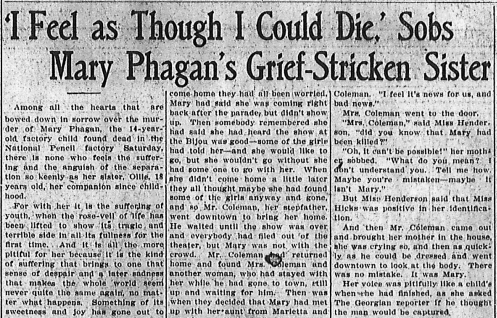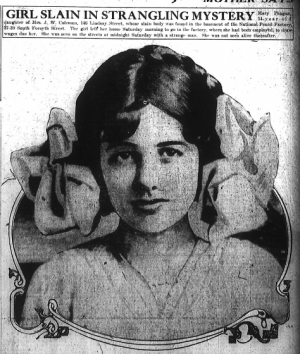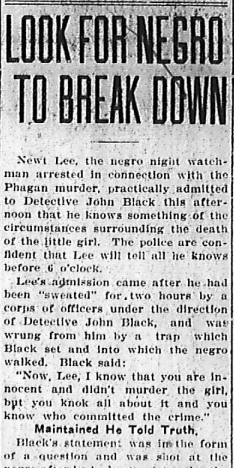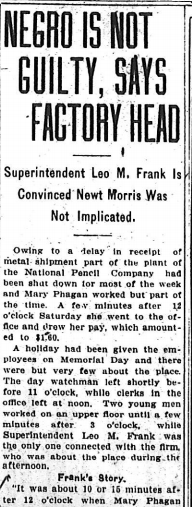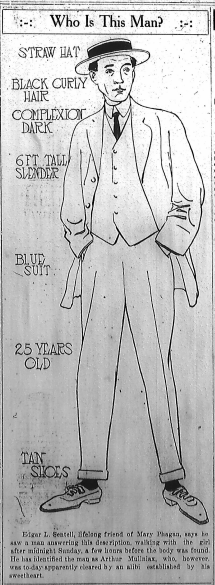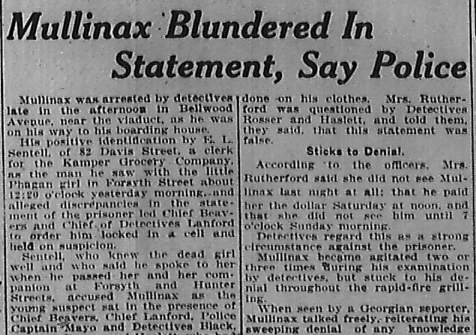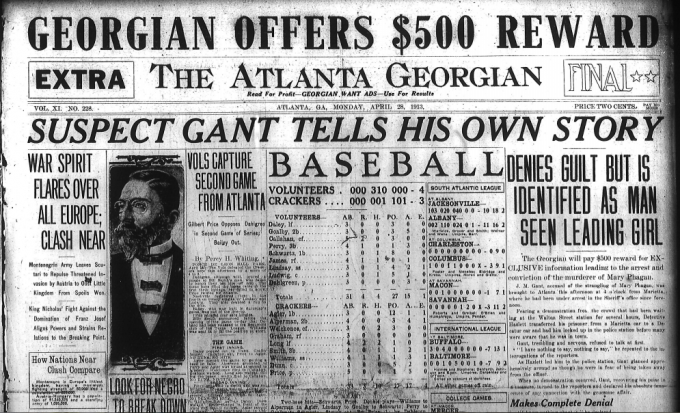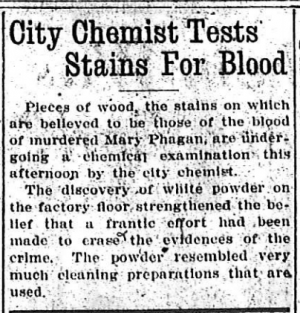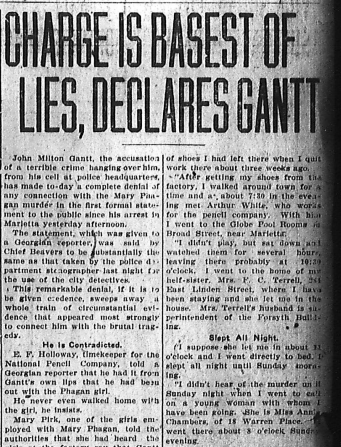 Another in our series of new transcriptions of contemporary articles on the Leo Frank case.
Another in our series of new transcriptions of contemporary articles on the Leo Frank case.
Atlanta Georgian
Tuesday, April 29th, 1913
John Milton Gantt, the accusation of a terrible crime hanging over him, from his cell at police headquarters, has made to-day a complete denial of any connection with the Mary Phagan murder in the first formal statement to the public since his arrest in Marietta yesterday afternoon.
The statement, which was given to a Georgian reporter, was said by Chief Beavers to be substantially the same as that taken by the police department stenographer last night for the use of the city detectives.
This remarkable denial, if it is to be given credence, sweeps away a whole train of circumstantial evidence that appeared most strongly to connect him with the brutal tragedy. Continue Reading →


